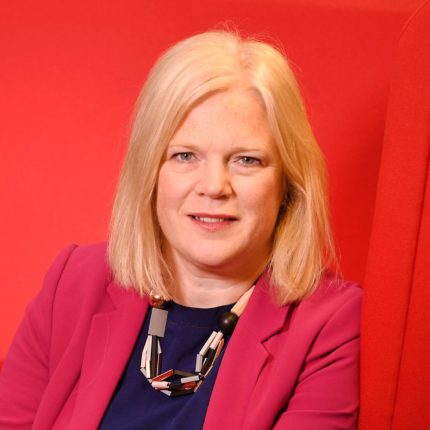It is no secret that 2022 was the most competitive cycle we’ve experienced in over a decade.
As we publish our sector-level End of Cycle data, we can complete the 2022 admissions picture. To date, this has focused on the fact that students faced increased competition for places amid a boom in the number of 18 year olds in the UK, and growing demand for higher education from both domestic and international applicants.
As UCAS data shows, student optimism and ambition remained high during 2022, resulting in record numbers of UK 18 year olds securing a place at university or college this year.
UCAS publishes over 8 million data points each year, and also uses real time student sentiment analysis pulled from our trusted relationships with both pre-applicants and applicants. Here are five findings which particularly interested us from this year’s cycle.
Leveraging the power of Clearing
A record number of students applied to university or college in 2022, up 2.1 per cent on last year, with a corresponding uplift in placed students (up 0.2 per cent). Of those who secured a place, almost 67,000 did so through Clearing.
Clearing is changing, as 2022 demonstrated, and is no longer perceived as an option solely for applicants who didn’t meet their required grade.
We’ve seen particular focus on “Free to be placed in Clearing” numbers this year, but each year we typically see relatively large numbers of students in this pool. This is due to a wide range of reasons – from mature students who have decided to gain employment rather than pursue higher education, to international applicants who have chosen to study in another country.
Within those “Free to be placed in Clearing” students, we saw around 21,000 who did not meet the conditions of their offer released into Clearing on JCQ results day. These were active applicants still looking for a place, and we know 57 per cent of those have since been accepted onto a course – up from 55.5 per cent in 2021.
This shows the growing value of Clearing, particularly with features such as UCAS’ Clearing Plus tool, which matches unplaced applicants with courses based on their preferences and requirements, and the “Decline my Place” feature, which supported around 20,000 applicants to pursue and accept an alternative offer.
We anticipate this use of Clearing will continue into the 2023 cycle and beyond as students leverage the flexibility it offers, enabling them to change their choice or consider options they would not otherwise have thought about.
Record progression for most disadvantaged students
Concerted efforts to make universities and colleges more accessible to young people from all backgrounds has led to growing numbers of disadvantaged students progressing to higher education each year over the past decade.
Even in a more competitive cycle this year, we’ve seen this upward trajectory continue, with the highest number of 18 year olds from the most disadvantaged areas in the UK accepted on record – a 4.9 per cent increase on last year and 52 per cent more than 2013. As a result, the entry rate gap between POLAR4 Q1 and Q5 has narrowed to a record low of 2:1.
Through UCAS’ Fair Access Programme, we are delivering and developing initiatives to support fair access. This includes fully personalised student journeys and a new outreach connection service to connect schools and students to appropriate outreach activities.
We’re taking our insights to the next level and have introduced seven new widening participation questions to the UCAS application for 2023 entry, to further enhance our understanding about the progression of these students. This will enable a broader range of students to easily flag their circumstances and, in turn, access the right support for their needs.
However, progress made in widening access and participation faces fresh challenges as we predict up to a million undergraduate applicants by 2026, with increased demand and competition posing risks to those from the most disadvantaged backgrounds.
London continues to lead the way in participation
Last year, the entry rate for 18 year olds in London reached above 50 per cent – something we have seen again this year, with a 0.2 percentage point increase to 51.6 per cent. In fact, London is the only region in 2022 that saw an increasing entry rate. Within London, we see some regions such as Wimbledon, Battersea and Tooting exceed an entry rate over 60 per cent, while in total, around half of accepted applicants are from Indices of Multiple Deprivation (IMD) Q1 and Q2 areas.
By contrast, the northeast and southwest remain the regions with the lowest progression, with entry rates of 31.4 per cent (0.4 percentage points down year on year) and 31.5 per cent (2 percentage points down) respectively. This has increased the regional gap between London and the northeast to a ratio of 1.64.
The journey to a million applicants presents further risks to regional differences. As we see the increase in population and demand, we should continue to better understand what London is getting right, and how we can apply some of this to other regions.
Strong demand among international applicants continues
The pattern of growth among international applicants continues, with the lifting of Covid-19 restrictions and the resumption of global travel. In total, there have been 73,820 accepted students (all ages, all domiciles) via UCAS this year – an increase on 70,055 in 2021 (up 5.4 per cent). The UK has long been viewed as a study destination of choice, and this confirms UCAS’ position as the single biggest gateway to studying in the UK for internationally mobile undergraduate students.
We have seen major uplifts in accepted students from three countries in particular. Robust demand from applicants in China remains strong despite continued Covid-19 lockdowns, with 18,500 placed students (up 13.4 per cent on 2021) – now accounting for 3.3 per cent of all accepted applicants, making it the largest market for UK international student recruitment by far. India remains the second largest market with 6,610 placed students (up 43.7 per cent on 2021).
Somewhat more marked is the growth in students from Nigeria, with 1,990 securing a place, up 32.7 per cent on 2021. In combination with this data, our insights reveal differing motivations by nation for studying in the UK. We know the most important factor for Indian students is that higher education options are of “better quality” than at home, while Nigerian students are most interested in gaining skills to support them in their career.
This strengthens our understanding of what the most influential factors are for international students in both existing and emerging markets, allowing us to tailor information, advice and guidance. UCAS continues to invest in our support for international students and their advisers at both undergraduate and postgraduate levels.
Little impact from cost of living concerns (so far)
Over the past year, the rising cost of living has started to dominate headlines around the world. However, UCAS survey insights reveal it doesn’t appear to have had a significant impact on 2022 applicants’ decision making.
Our insights show that there has been a high financial awareness among students throughout the cycle, with 66 per cent of those placed worried about the cost of living at university (up from 53 per cent last year). Two thirds had decided to work part-time alongside their studies, and there is higher consideration about the cost of travelling between home and university.
Yet, despite these concerns, applicants were still keen to go to university – with only 16 per cent chosing a particular university due to the cost of living – and they have not been deterred by tuition fees.
This cohort will have started to explore their options at least two years beforehand, making decisions much earlier than the point in which they submitted their UCAS application. We will be engaging with 2023 applicants throughout the cycle, providing more insight as the main January application deadline passes.
As we publish this final insight into the 2022 landscape, we are already almost halfway through the 2023 application cycle. Early indications show that an increasing UK 18 year old population and growing competition will be a feature of this cycle, and we expect this to be the case for the remainder of the decade. Cost of living is also likely to be a key part of the story of 2023. With the 25 January Equal Consideration Deadline approaching, we will soon see how much these external factors shape this new cycle.












